At first glance, a baseball bat looks pretty straightforward. I mean, it’s a simple slab of wood or metal that’s cut down to a specific shape, right? But when you start digging deeper and looking at the design and mechanics, you’ll start to notice all the complexity that surrounds it.
One thing that confuses most ballplayers about their baseball bats is their drop weight. Denoted as -3, -5, or something similar, the true meaning of these values often escapes a casual player. Yes, they know that it has something to do with the weight of the bat, but most people don’t know what it exactly means.
And it’s okay, to a certain level. If you’re a casual player who simply plays a couple of games over the weekends, you don’t really need to know the drop weight of your bat. You just use the bat that feels right and call it a day.
However, when you want to go pro, you need a bat that’s perfect for your playstyle and skill level. And understanding the drop weight and other nuances of your baseball bat is part of the deal. Don’t worry – it’s really not that difficult to understand.
I will give you a hand in knowing all there’s to know about What is a Baseball Bat Drop and help you figure out which drop weight is perfect for you. So, let’s get started.
- What is a Baseball Bat Drop? What Does Drop Mean in Baseball Bats?
- What does drop 3 mean on a baseball bat?
- What does drop 5 mean in baseball bats?
- What does drop 8 mean in baseball bats?
- What does drop 10 mean on a baseball bat?
- What does drop 11 mean on a baseball bat?
- What does drop 12 mean on a baseball bat?
- Are There Any Rules About Drop Weight in Baseball Bats?
- High School and College (BBCOR Bats)
- Youth Leagues
- How Do I Know What Drop Bat I Need?
- Age and League rules
- Physical Strength
- Skill Level
- Try Out Different Bats
- Consult Your Coach
- How to Pick Drop on Youth Baseball Bat?
- Frequently Asked Questions
- Before I Leave
What is a Baseball Bat Drop? What Does Drop Mean in Baseball Bats?
To put it simply, the “drop” in a baseball bat refers to the difference between the length of the bat in inches to the weight of the bat in ounces. Since the length of the bat in inches is always greater than its weight in ounces, the drop value is usually in the negative range.
Here’s a simple equation to help you understand it better:
Bat weight (in ounces) – Bat Length (in inches) = Baseball Bat Drop
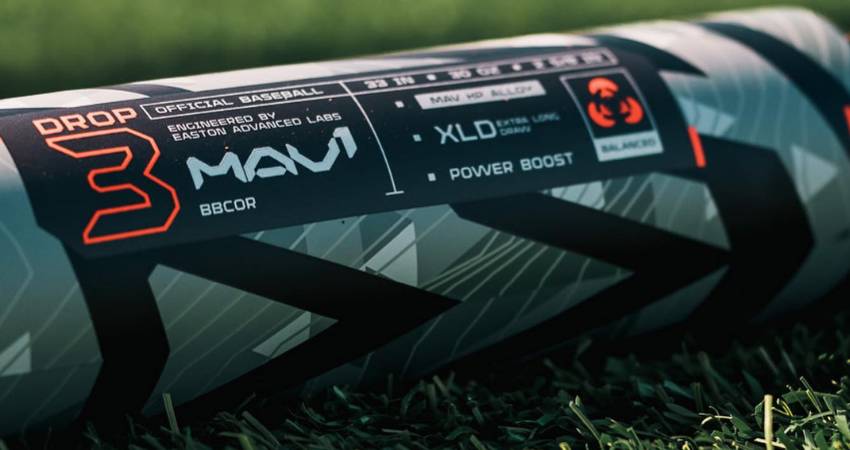
Now, the drop of a baseball bat is pretty important. How? Well, for one thing, it helps the player choose a bat that suits their playing preferences even when they don’t have the option to try it out physically.
A higher drop number indicates a lighter baseball bat in relation to its weight. And inversely, a bat with a lower drop number means the bat will be relatively heavier for its size.
Let me give you an example –
If a 33-inch baseball bat has a drop of -3, that means the bat weighs 30 ounces. If the drop was -5, then that would indicate that its weight is 28 ounces. Knowing what the drop weight refers to means you don’t even need to pick up the bat yourself to know it’s weight.
With that said, let me talk a bit about the different drop weights commonly found in baseball bats –
What does drop 3 mean on a baseball bat?
Drop 3 or – 3 in a baseball bat means that if the bat length is 30 inches, the weight of the bat is 27 ounces. This is the accepted drop for baseball bats in high school and college baseball leagues.
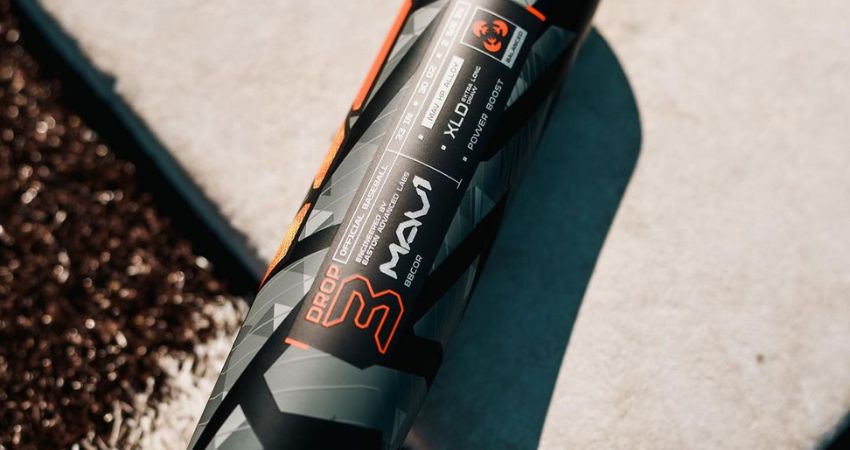

These bats are slightly heavier in relation to their weights, which means wielding them effectively requires practice. However, because of their greater weight, a skilled player will be able to drop the ball further on a successful contact.
What does drop 5 mean in baseball bats?
If the length of a – 5 or drop 5 baseball bat is 33 inches, then that means it weighs 28 ounces. Notice that for 30-inch bats, the weight would come down to 25 ounces. So, a higher drop value means that the bat would be lighter in relation to its weight.
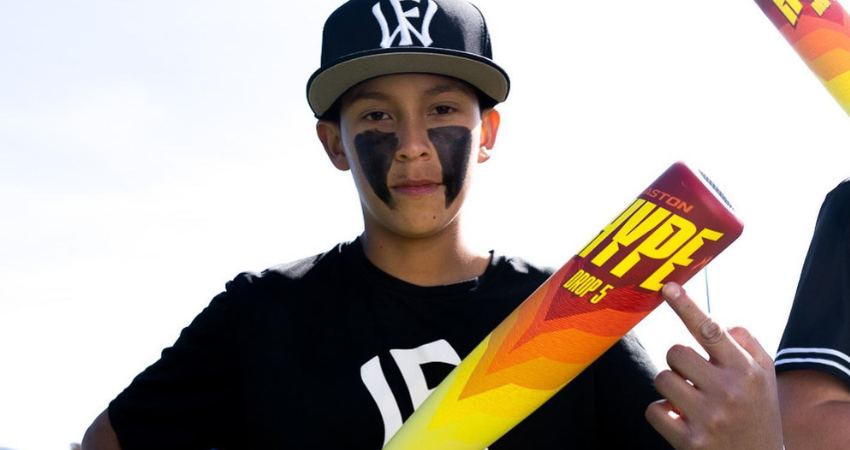

A drop 5 bat is good for youth players who have a decent bit of training under their belt but still aren’t strong enough to use a -3 baseball bat. Players between the age of 13 to 14 years usually go with a -5 baseball bat.
What does drop 8 mean in baseball bats?
Drop 8 or – 8 baseball bats are a lot lighter compared to – 5 bats. These bats are used for 12 or 13 year olds who are starting to make their mark in youth baseball. For under 12 leagues, this is an acceptable drop weight.
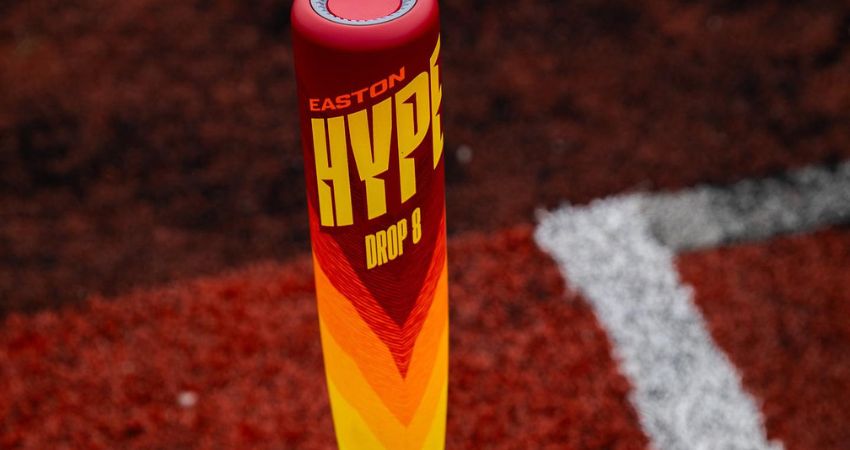

For a 33-inch baseball bat, the drop weight of – 8 means that the weight of the bat is around 25 ounces.
What does drop 10 mean on a baseball bat?
I’m sure you’re getting a good idea about it by now – a drop 10 or – 10 baseball bat is pretty lightweight for its size. A 30-inch baseball bat with a – 10 drop weight weighs only 20 ounces.
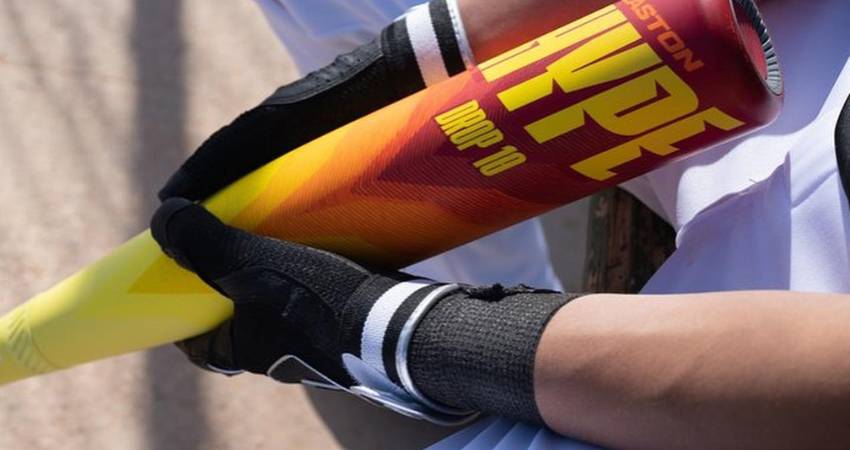

This is the accepted bat drop for 10 year old players competing in the USA or USSSA baseball leagues. But senior players are not allowed to use such a lightweight baseball bat.
What does drop 11 mean on a baseball bat?
Drop 11 or – 11 bat is the accepted value for 8 year olds playing in the USA or USSSA baseball leagues. Younger players will have an easier time swinging a – 11 baseball bat because of its lighter weight in relation to its length.
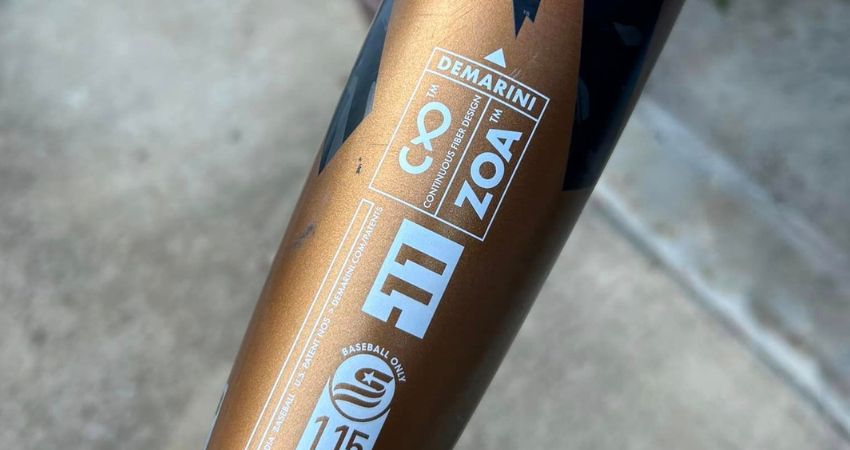

Typically, players of that age use a baseball bat that’s around 30 inches in length. So in most cases, a – 11 drop baseball bat weighs around 19 ounces.
What does drop 12 mean on a baseball bat?
Drop 12, or even drop 13, for that matter, are only suitable for players under 7 years of age. Since the bat is extremely light, wielding it is not that difficult for a youngster.
And it also makes it easier for the youth player to learn the techniques of swinging a baseball bat properly.
Are There Any Rules About Drop Weight in Baseball Bats?
Yes, there are rules and regulations regarding drop weight in baseball bats, particularly in certain leagues and levels of play. Different leagues and organizations have specific rules regarding the maximum allowable drop weight for bats.
And it’s important to know about the rules of the organizations that you play under to make sure you don’t get disqualified for using an unauthorized baseball bat. Using an illegal drop weight can penalize your entire team.
Let me give you a couple of quick examples of different leagues and their associated regulations:
High School and College (BBCOR Bats)
In high school and college baseball, BBCOR (Batted Ball Coefficient of Restitution) bats are used. These bats are required to have a maximum drop weight of -3.
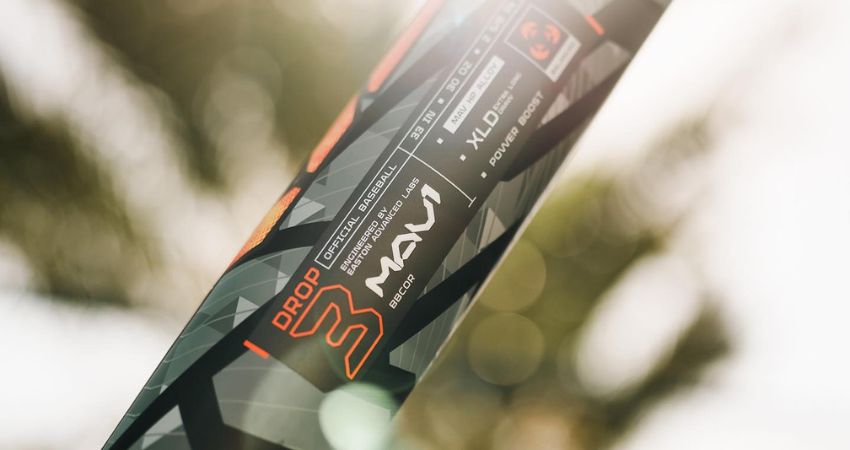

This means that the length of the bat in inches must not be more than 3 units greater than the weight of the bat in ounces. For example, a BBCOR bat that is 33 inches long must weigh at least 30 ounces.
Youth Leagues
Youth baseball leagues often have different rules regarding drop weight, as they cater to younger players. For instance, Little League baseball has specific guidelines for bat drop weight based on the diameter of the barrel.
These rules are designed to ensure that younger players are using bats that are appropriate for their size and strength.
How Do I Know What Drop Bat I Need?
When choosing a new baseball bat, it’s important to think about the regulations that apply to your specific league. You want to go with a bat that complies with the rules of your baseball organization.
Now, it’s difficult for me to suggest which drop weight is right for your baseball bat since it depends on a lot of different factors such as your age, skill level, physical strength, etc. But I’ll give you a couple of general tips to help make things a bit easier on your end.
Age and League rules
As I said earlier, each league has specific rules that dictate the maximum drop weights allowed in a baseball bat. So, the first thing you need to do is do some research on the league regulations that you play under.
Also, keep in mind – your age also plays a role in determining what drop weight you can use. Younger players are allowed to use a lighter bat. For example, if the player’s age is under ten years, he can use a drop 10 or drop 11 baseball bat.
Physical Strength
Another important thing to consider is your physical strength. A heavier bat might give you more power behind your swing, but swinging it efficiently will also require more skill and effort, which a beginner might lack.
Typically, a beginner or youth player with less strength will prefer playing with a higher drop baseball bat. But if you have the ability to wield a heavier bat, then you might be better off with a lower drop bat for better hitting power.
Skill Level
Your skill level also plays a huge role in determining which drop is better for you. As you get better and more comfortable with the game, you will be able to wield heavier bats.
If you’re a beginner, though, a higher drop bat will generally give you a better experience. For example, a beginner 12 year old player usually starts with a – 8 baseball bat. But for a skilled 12 year old hitter, a – 5 baseball bat will be more fitting.
Try Out Different Bats
The best advice I can give you is to try out different drops in baseball bats to see which one feels most comfortable in your hands. If there’s a sports store near your place, trying out different bats will give you a good idea of how different drop weights feel.
Consult Your Coach
If you are still struggling to figure out the right drop weight for your baseball bat, talking to your coach should set you on the right path. You could also ask for advice from a more experienced friend to get some insights on choosing the right drop weight for your play style.
How to Pick Drop on Youth Baseball Bat?
If you’re a youth baseball player, it’s important to choose a baseball bat that’s suitable for your skill level and play style. And that means making sure the drop weight of the baseball bat is perfect.
Youth baseball leagues, as of 2018, have adopted the USA standards for their baseball bats. And that means there’s no real weight restriction as long as the barrel diameter of the bat does not exceed 2 5/8 inches.
So, you have some flexibility here. I would recommend going with a bat that feels comfortable in your hand when you swing it but still has a bit of weight in it. Finding the right balance of swing speed and power is essential if you want to hit homers with your bat consistently.
Is Drop 3 Heavier Than Drop 5?
The drop weight of a bat refers to the weight of the bat in relation to its size. That means a bat with a higher drop is usually lighter. And naturally, the length of the bat has a role to play here.
So, if the length of the bat is constant, then yes – a drop 3 bat is heavier than a drop 5 bat. For example, if the length of a bat is 30 inches, then a drop 3 bat would weigh 27 ounces, and a drop 5 bat would weigh 25 ounces.
Is a Drop 8 or a Drop 10 Better?
The drop weight of a bat has little to no impact on its overall performance. Typically, the drop weights that players choose for their bat depend on the player’s skill level, comfort, and age group. So, a drop 8 bat isn’t necessarily better than a drop 10 bat or vice versa.
But there’s a catch here. Research shows that a heavier baseball bat, because of its greater mass, can transfer more power to the baseball on a successful connection. So, in theory, the distance the ball would travel on a successful hit will be further if you are using a drop 8 bat instead of a drop 10 bat.
That means if you’re looking for better contact strength, a drop 8 bat would be better than a drop 10 bat. Inversely, a drop 10 bat is lighter, which makes it easier to swing. For a beginner, a drop 10 bat would seem more appealing for this reason.
What is the Difference Between Drop 10 and Drop 11 Bats?
The difference between a drop 10 and a drop 11 bat is pretty minuscule. When the bat length is constant, the weight difference between these two drop weights is only an ounce. But depending on the situation and the player’s age, this one ounce of difference can be quite significant.
Usually, players under 10 years of age but older than 8 years go with a drop 10 baseball bat. And players who are 8 years of age go with a drop 11 baseball bat since it’s slightly easier to swing.
Frequently Asked Questions
The drop weight of baseball bats is something that confuses many players. By now, though, you should have a decent idea about what it’s all about. But before I leave you, let me address some of the questions that I often get asked about the drop weight of baseball bats.
Why Does Drop Matter in Baseball Bats?
The drop weight of a baseball bat plays a huge role in its overall feel and performance. A higher drop weight makes the bat feel lighter and easier to swing. And a lower drop means the bat will feel heavier but will also give you more hitting strength each swing.
But that’s not the only reason why drop weight matters. Different baseball leagues have different rules and regulations regarding the allowed bat drop. So you need to make sure you’re playing with a baseball bat that complies with the league regulations. Otherwise, you can get penalized.
What is the Heaviest Baseball Bat Drop?
As a rule of thumb, the higher the drop weight value of a bat, the lighter it is. By that logic, a – 3 baseball bat is considered the heaviest baseball bat drop. But there are heavier bats out there that don’t follow the drop format. Typically, baseball bats for power hitters are much heavier than these bats.
What is the Drop Allowed in USSSA 12U Baseball Bats?
According to USSSA rules, under 12 youth players must use a bat that’s no lighter than a – 8 drop. That means – 5 and – 3 drops are allowed as well as – 8 drops. But going with a – 10 drop baseball bat is a strict no-no.
Before I Leave
Baseball bats can seem pretty intimidating once you start looking at all the technology and construction features. But trust me – it gets easier. And the more you play the game and get to know your baseball gear, the quicker you start learning all the quirks of your baseball bat.
And hey, look at the bright side, now that you understand what a baseball bat drop is, that’s one less thing you need to worry about. You’ll be able to understand what the true weight of a baseball bat is the moment you see its drop weight number. It will make it easier to choose a new baseball bat for yourself in the future.
I hope my in-depth guide on baseball bat drop weight could shed light on the subject. Cheers!
